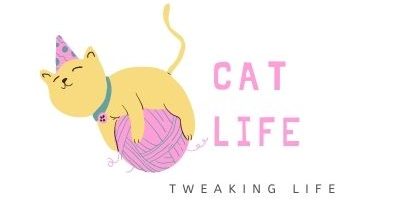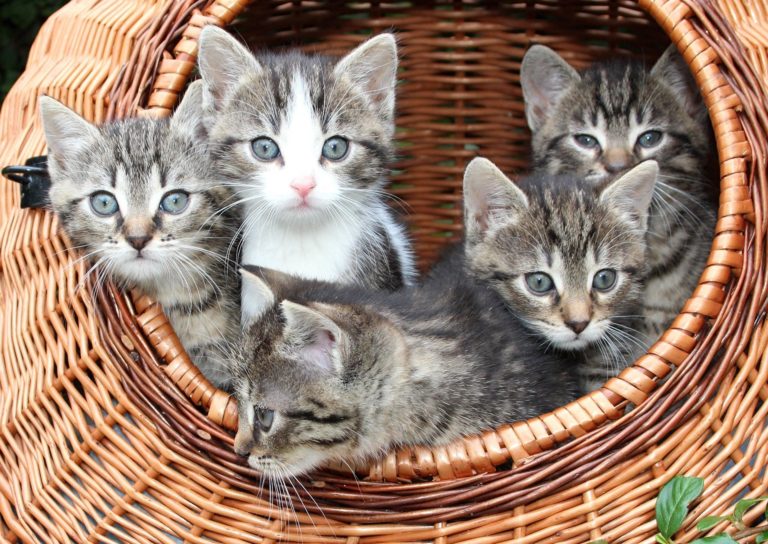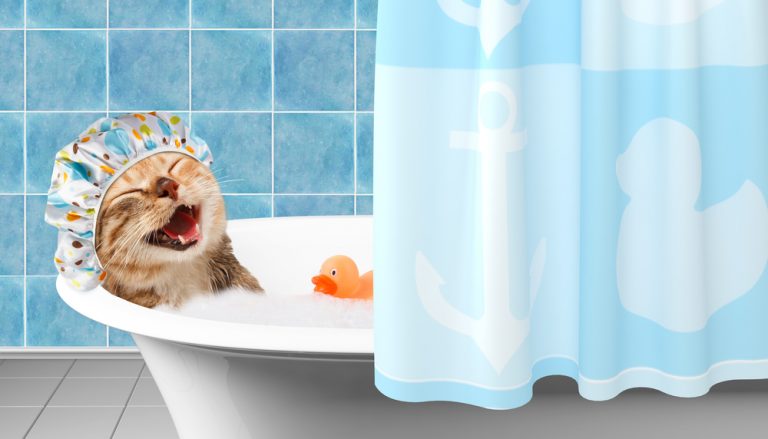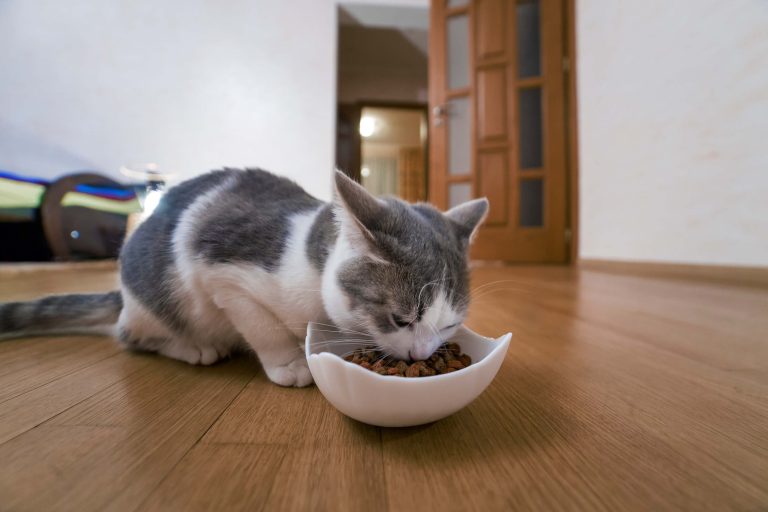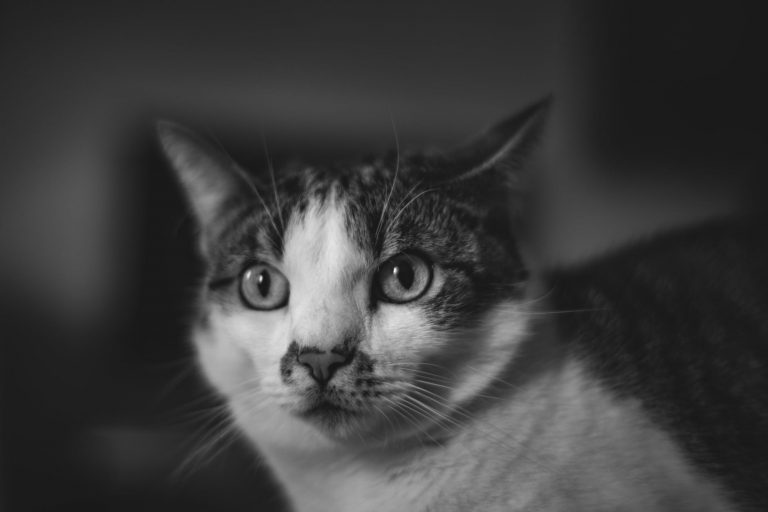Why do Cats Knead? The Fascinating Behaviour Explained
Does your cat like to make bread often? Yes, I am talking about him/her kneading your blanket or if you’re really lucky (khm…unlucky) your stomach.
There’s not a worse feeling than him putting his nails up your skin, but how can you complain when they’re so cute? I believe a lot of cat owners will agree with me on this.
Cats are enigmatic creatures, often surprising us with their quirky habits and behaviors. One such intriguing behavior is cat kneading, a rhythmic pressing motion cats make with their paws.
This adorable yet perplexing action has puzzled cat owners all over the globe. But why do cats knead?
Let’s discover why they do this and whether this behavior reveals hidden aspects of a cat’s emotional or physical well-being that we, as cat owners, should be more attuned to.
What is Cat Kneading and Why do Cats Knead?
Before delving into the why, it’s essential to understand what cat kneading is.
Kneading is a common behavior observed in domestic cats, where they push their paws in and out against a soft surface, such as a blanket, pillow, or even their human companion’s lap. This action is usually performed with their front paws, alternating between left and right, and often accompanied by a contented purring.
Cats may knead while they’re sitting on their owner’s lap when they’re about to settle down for a nap, or even while they’re simply lounging and feeling particularly relaxed and happy.
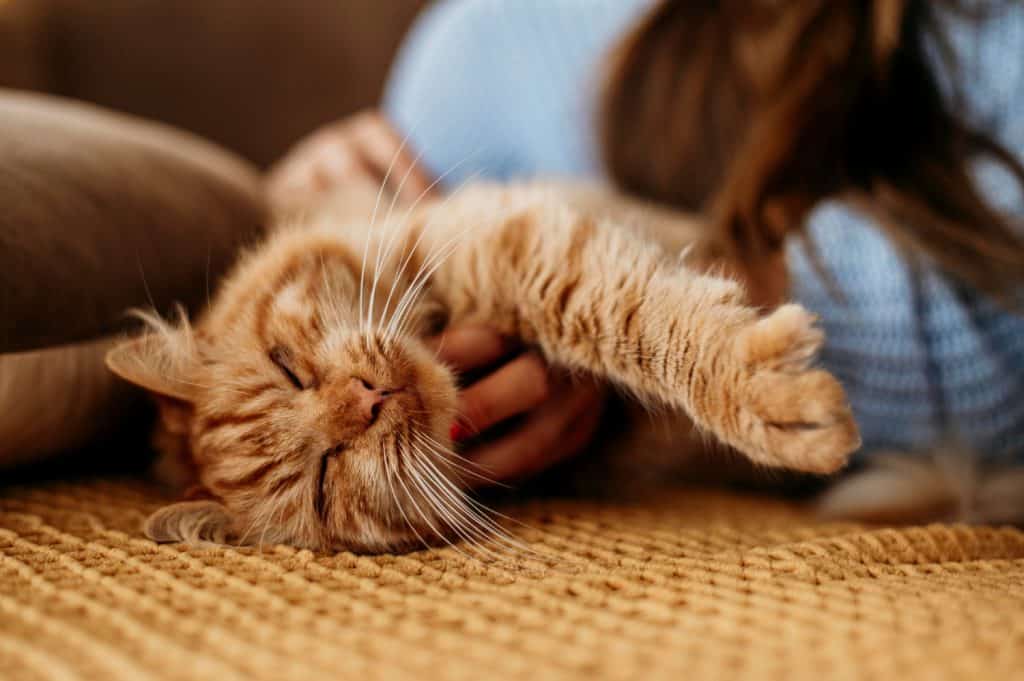
The Roots of Cat Kneading – A Kitten’s Tale
Kneading, often referred to as “making biscuits or making bread,” is a behavior that originates from a cat’s infancy. When kittens nurse, they instinctively knead their mother’s belly to stimulate milk flow. This early-life action is not only vital for their survival but also forms a part of their comfort and bonding process with their mother.
As cats grow older, this kneading behavior, although no longer necessary for feeding, often persists. It’s believed to be a carryover from kittenhood, a nostalgic reminder of the comfort and security they felt as newborns. This theory is supported by the observation that cats often knead when they’re feeling relaxed, content, and affectionate.
Real-life example:
Consider Molly, a domestic shorthair who kneads her owner’s lap every evening. This behavior seems to transport Molly back to her kitten days, creating a serene and contented atmosphere, reminiscent of the safety and comfort she experienced as a young cat.
Kneading as a Sign of Affection and Territory Marking
Cats are known for their territorial nature, and kneading plays a role in this instinctual behavior. The pads of a cat’s paws contain scent glands, and when they knead, they’re also marking their territory with their unique scent. This is a subtle way of claiming their favorite spots or even their human companions.
Moreover, cat kneading is often a sign of affection. When your cat kneads your lap or snuggles next to you, it’s a sign of trust and love. It’s their way of showing that they feel safe and attached to you.
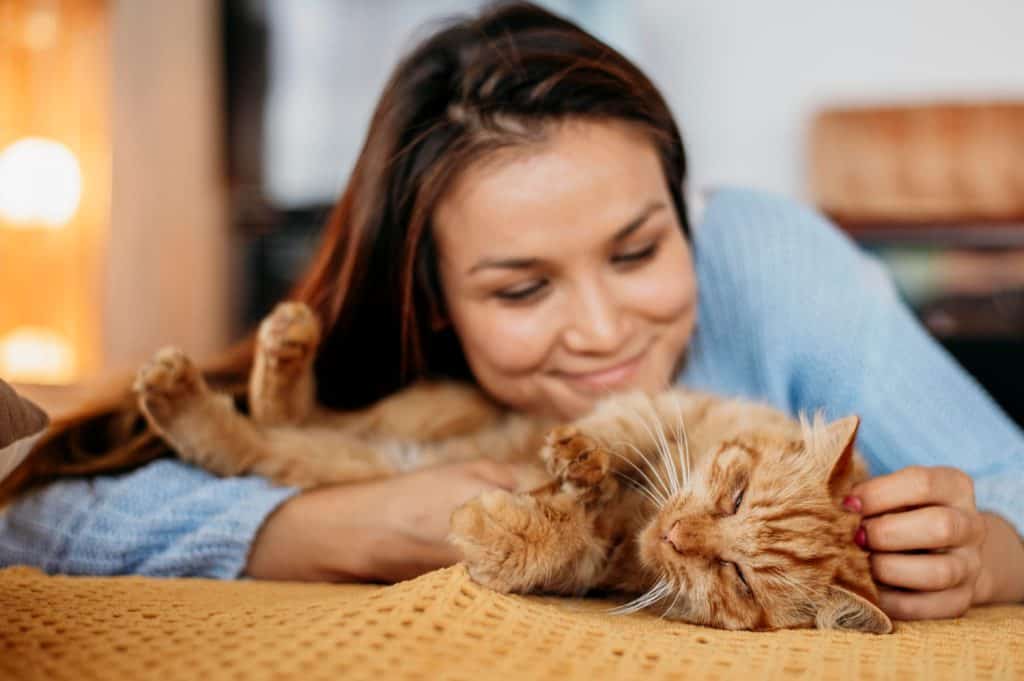
Practical advice:
If your cat kneads you, it’s a sign of affection. However, if the kneading is accompanied by sharp claws, gently guide your cat to a soft blanket or a pillow to knead on. This can protect your skin while allowing your cat to express affection comfortably.
Trim Your Cat’s Nails to Avoid Injury or Damage
If a blanket trick doesn’t work, keep your cat’s nails trimmed to prevent painful kneading on your lap. Trimming your cat’s nails not only enhances the comfort of cuddling with them but also helps prevent ingrown nails and protects your furniture from their curious paws.
If you find freshly trimmed nails still cause havoc to your lap, add a cozy blanket between yourself and your cat. Or, gently stand up and walk away so your cat can’t sit on your lap.
Redirect Your Cat Off Your Lap with a Toy or Treats
If your cat’s kneading on your lap gets uncomfortable, gently guide her to knead on a suitable surface such as a blanket instead. It’s okay to not want your cat on your lap, and you might feel better if you redirect your cat with a treat rather than just putting him/her down.
Gently nudge her to the side or entice her with a treat or toy. Use positive reinforcement training by rewarding her with treats, verbal, or physical praise when she makes biscuits on the wanted surface.
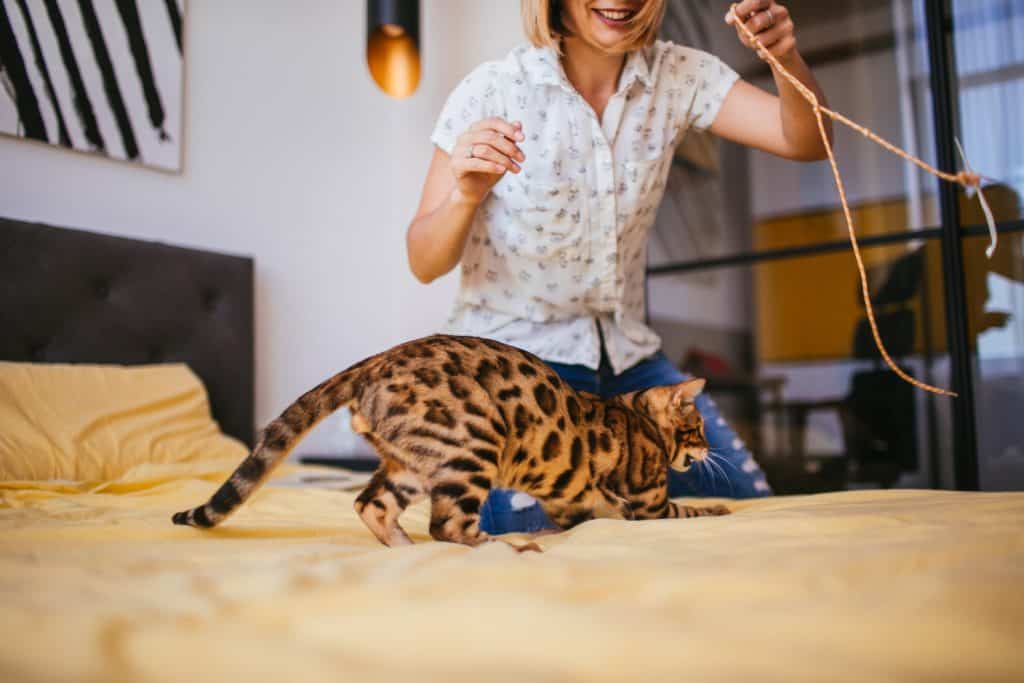
The Comfort and Stress-Relief Aspect of Kneading
Kneading isn’t just about affection or territory; it’s also a self-soothing behavior.
Kneading serves a physical purpose. When cats knead, they are essentially stretching their muscles. This action can be likened to a mini yoga session, or as cat enthusiasts might playfully call it, a “meowoga” session. The rhythmic pressing of paws against a soft surface helps cats stretch their paws, legs, and even their back muscles, contributing to their physical well-being.
This stretching is particularly important considering the amount of time cats spend sleeping and lounging. Just like humans need to stretch after being in one position for too long, cats use kneading as a way to keep their muscles active and limber. This not only helps in maintaining flexibility but also aids in their agility and mobility.
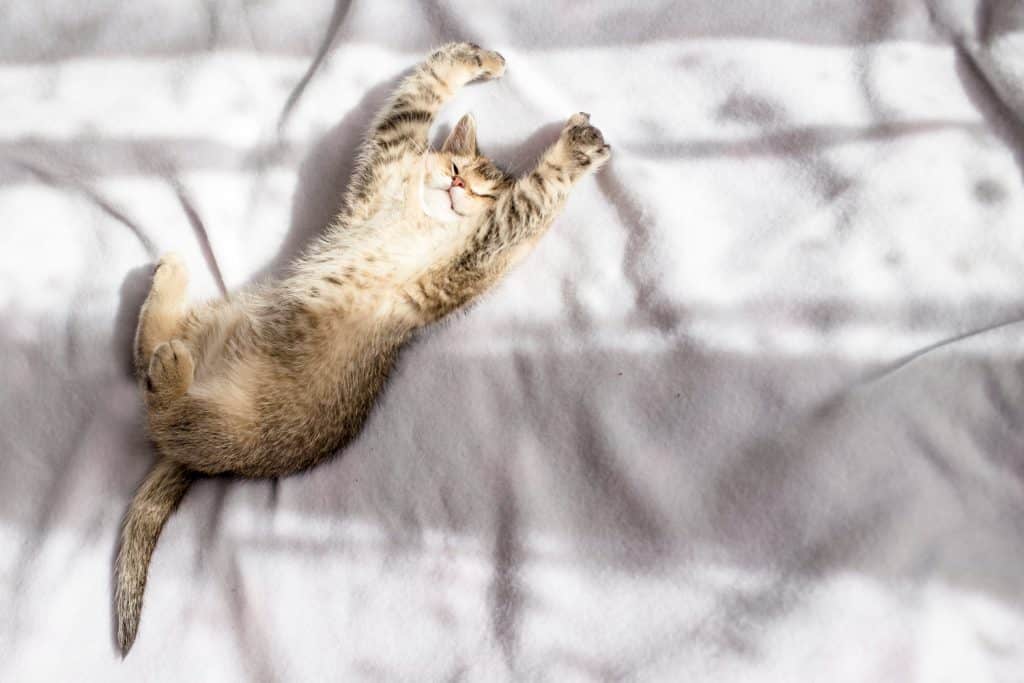
Cats knead to create a comfortable resting area, reminiscent of their nesting behavior in the wild. This action can also be a stress reliever, helping them to calm down and relax.
Research has shown that rhythmic, repetitive motions, such as kneading, can release endorphins in cats, contributing to a feeling of well-being and contentment. This is similar to the comfort humans feel when engaging in repetitive motions like knitting or rocking.
Real-life example:
Take the case of Oliver, a rescue cat who kneads his blanket every night before sleeping. This behavior seems to help him unwind and settle down, indicating that kneading serves as a comforting ritual that eases his transition into rest.
A Link to Wild Ancestors and Mating Behaviors
Kneading also connects domestic cats to their wild ancestors. In the wild, big cats like lions and tigers knead to soften the ground or grass before lying down. This behavior makes their resting area more comfortable, a trait that has been passed down to our domestic felines. When your cat kneads a blanket or a cushion, they are essentially “making their bed”, a ritual that dates back to their wild roots.
Additionally, kneading can be associated with mating behaviors in cats. Female cats in heat, for instance, often exhibit an increase in kneading. They may knead more frequently, sometimes even in the air, as a part of their mating ritual. This increase in affectionate behavior, including kneading, is a sign of their readiness to mate.
Moreover, kneading can be an indicator of a cat preparing for labor. When a female cat, visibly in heat and growing in size, begins to knead her nesting area more than usual, it may indicate that she’s nearing labor. This nesting activity is a natural aspect of the birthing process, as the cat readies her surroundings for the impending birth of her kittens.
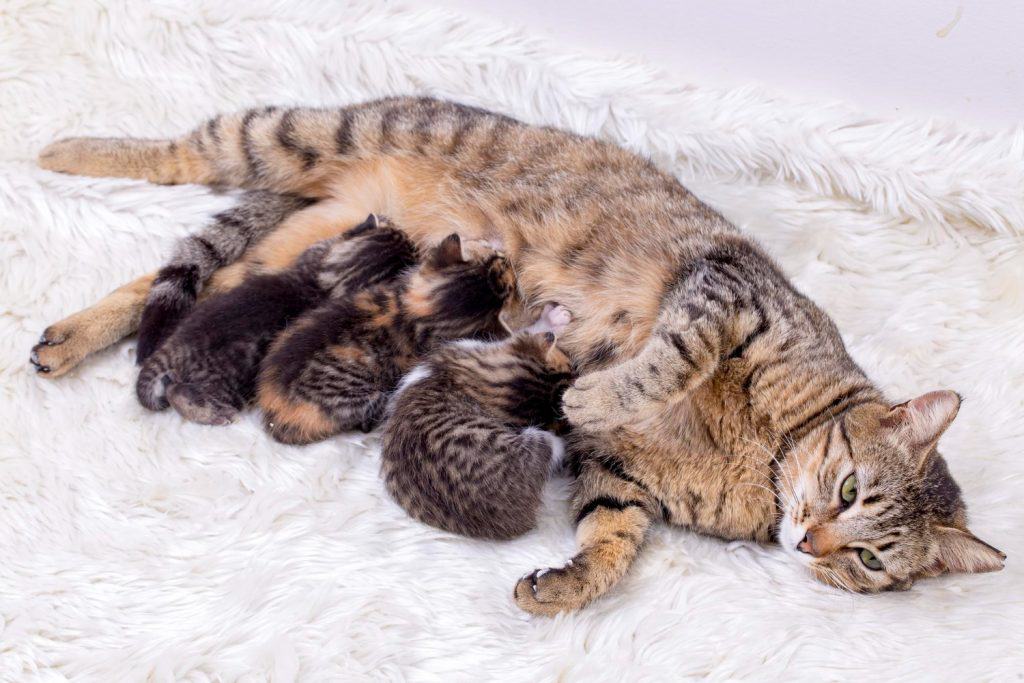
When Kneading Indicates Health Issues
While kneading is typically a normal and healthy behavior, in some cases, it can be indicative of underlying health issues. Excessive kneading, especially if accompanied by meowing or other signs of distress, might signal discomfort or pain.
A noticeable change in a cat’s kneading pattern, whether in frequency or vigor, could signal underlying issues, including stress or health problems like arthritis. Cat owners should be vigilant and seek veterinary advice upon spotting any unusual variations in their pet’s kneading habits.
Regularly observe your cat’s kneading patterns and behaviors. If you notice any changes or signs of discomfort, consult with a veterinarian to rule out any health concerns.
Pay Attention to Any Signs of Stress
Your cat could become stressed over several things – like a new member of the household, a change in schedule, or an underlying health condition. Checking in with your vet is a good idea at the first sign of a change in behavior.
After ruling out a more serious health condition, you can relieve your cat’s stress with these tips:
- When you’re on the move or in unfamiliar surroundings, bring along items your cat loves, such as their preferred bed, blanket, or toy.
- Try to maintain a consistent routine for feeding, playing, and sleeping as closely as you can.
- Ensure your cat gets daily interactive play and various other stimulating activities.
- Allow your cat to have options and the freedom to make their own choices. This might include giving her more than one cozy bed for napping and letting her decide when she would like to be pet or handled.
- Try a calming aid, like pheromones or catnip.
If you’re uncertain, consult your veterinarian or a cat behavior expert for advice on how to help your cat return to contentedly kneading.
Conclusion
Kneading is a multifaceted behavior that speaks volumes about a cat’s emotional and physical state. From a comforting reminder of kittenhood to a display of affection and a means of stress relief, kneading is a unique and endearing aspect of feline behavior.
Understanding this behavior not only deepens our appreciation of our feline friends but also enhances our ability to care for them in the most loving and informed way.
FAQ
Why is my cat kneading me and purring?
Your cat kneading you is typically a sign of affection and comfort. It’s a behavior that stems from their kittenhood and is associated with the warmth and safety they felt with their mother. When your cat kneads you, it often means they feel relaxed, happy, and bonded.u003cbru003e
Do all cats knead?
Most cats knead, but not all. It’s a common behavior, but individual cats may have different habits or ways of expressing comfort and affection.u003cbru003e
Should I stop my cat from kneading?
Generally, there’s no need to stop your cat from kneading as it’s a natural behavior. However, if it becomes uncomfortable, you can gently redirect your cat to a blanket or use a toy or treat to encourage them to knead elsewhere.u003cbru003e
Is kneading a sign that my cat is happy?
Kneading is often a sign of a content and relaxed cat. It’s associated with feelings of happiness and comfort, similar to when they were kittens.
Can kneading be a sign of stress in cats?
While kneading is generally a positive behavior, excessive kneading, especially if accompanied by other changes in behavior, could indicate stress or discomfort. It’s important to observe your cat and consult a vet if you notice unusual changes.
